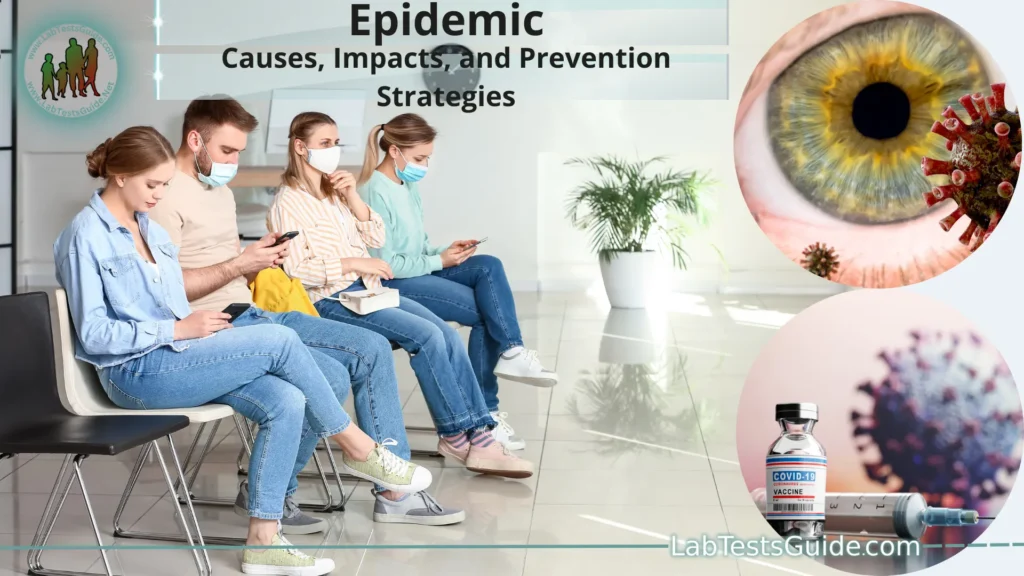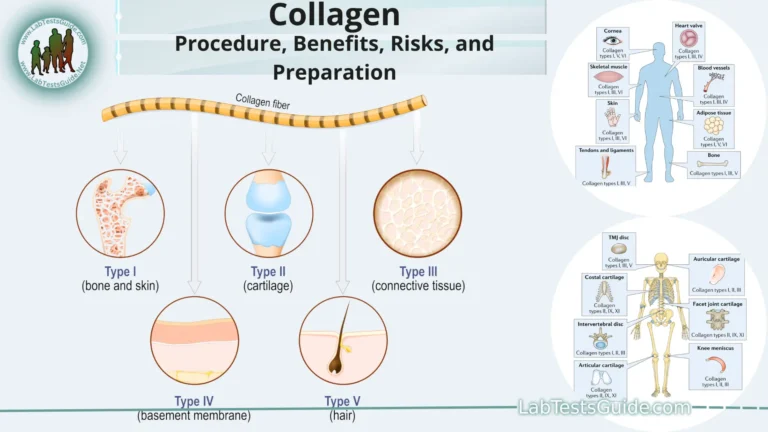An epidemic refers to the rapid and widespread outbreak of an infectious disease that affects a large number of people within a specific population, community, or region. Epidemics can be caused by viruses, bacteria, parasites, or other pathogens that are easily transmitted from person to person.

Definition and Characteristics:
An epidemic is a sudden and widespread outbreak of an infectious disease that affects a large number of people within a specific population, community, or geographic area. It is characterized by a significant increase in the number of cases of a particular disease beyond what is typically expected in that population.
- Infectious Agent:
- Rapid Spread:
- Affected Population:
- Transmission:
- Public Health Concern:
- Public Health Concern:
- Outbreak Investigation:
- Outbreak Investigation:
- Outbreak Investigation:
Types of Infectious Agents Causing Epidemics:
Here are the main types of infectious agents that can cause epidemics.
Viruses:
- Viruses are tiny infectious agents that can only replicate inside the living cells of a host organism. They consist of genetic material (either DNA or RNA) enclosed in a protein coat.
- Viruses can cause a wide range of diseases, from mild illnesses like the common cold to more severe ones like influenza (flu), HIV/AIDS, and COVID-19.
- Many viral infections are highly contagious and can spread rapidly through respiratory droplets, direct contact, or contact with contaminated surfaces.
Bacteria:
- Bacteria are single-celled microorganisms that can survive independently and reproduce outside of a host cell.
- Some bacteria are harmless and even beneficial, but pathogenic bacteria can cause various diseases, such as tuberculosis, cholera, and strep throat.
- Bacterial epidemics may occur due to contaminated food or water, person-to-person transmission, or contact with infected animals.
Parasites:
- Parasites are organisms that live on or inside a host organism, deriving nutrients from their host and potentially causing harm.
- Parasitic infections can lead to diseases like malaria (caused by Plasmodium parasites), amoebic dysentery (Entamoeba histolytica), and intestinal worms.
- Many parasitic infections are transmitted through vectors like mosquitoes, flies, or ticks, or through contaminated food and water.
Fungi:
- Fungi are eukaryotic microorganisms that can cause infections in humans, animals, and plants.
- Some fungal infections can lead to epidemics, such as certain types of fungal pneumonia or fungal meningitis.
- Fungal epidemics are less common than viral or bacterial epidemics but can still have significant public health impacts.
Prions:
- Prions are misfolded proteins that can trigger normal proteins in the brain to adopt an abnormal shape, leading to neurodegenerative diseases.
- Prion diseases, such as Creutzfeldt-Jakob disease in humans and bovine spongiform encephalopathy (BSE or “mad cow” disease) in cattle, are rare but have the potential to cause localized epidemics.
Transmission and Spread of Epidemic Diseases:
Here are some key aspects related to the transmission and spread of epidemic diseases.
Modes of Transmission:
- Respiratory Droplets: Many epidemic diseases, including influenza, COVID-19, and measles, spread through respiratory droplets expelled when an infected person coughs, sneezes, or talks. These droplets can be inhaled by nearby individuals, leading to new infections.
- Direct Contact: Contact with infected individuals or their bodily fluids (e.g., blood, saliva, mucus) can transmit diseases like Ebola, HIV, and certain types of bacterial infections.
- Fecal-Oral Route: Contaminated food, water, or surfaces can be sources of infection for diseases like cholera, norovirus, and hepatitis A. These pathogens are ingested and then infect the gastrointestinal system.
- Vector-Borne Transmission: Certain diseases are transmitted by vectors such as mosquitoes, ticks, fleas, or flies. Examples include malaria (mosquito-borne), Lyme disease (tick-borne), and bubonic plague (flea-borne).
- Sexual Transmission: Sexually transmitted infections (STIs) like HIV, syphilis, and gonorrhea can spread through sexual contact with an infected person.
- Vertical Transmission: Some diseases can be transmitted from an infected mother to her baby during childbirth or through breastfeeding. Examples include HIV and syphilis.
- Zoonotic Transmission: Zoonotic diseases are transmitted from animals to humans. The origin of some epidemics, like SARS-CoV-2 (COVID-19) and Ebola, is believed to be zoonotic.
Factors Influencing Spread:
- Population Density: Higher population density can facilitate the rapid transmission of infectious agents, especially in crowded urban areas or places with close living quarters.
- Human Mobility: Travel and movement of people can accelerate the spread of diseases, allowing them to reach new regions and communities.
- Susceptibility of the Population: The proportion of individuals susceptible to a particular pathogen influences its ability to spread within a population. High susceptibility can lead to more extensive outbreaks.
- Immunity: The presence of immunity in a population, either through previous infection or vaccination, can act as a barrier to transmission, slowing down the spread of the disease.
- Healthcare Infrastructure: The availability and effectiveness of healthcare services play a crucial role in detecting and controlling an epidemic, as well as providing necessary treatments and vaccinations.
- Public Health Measures: Implementation of preventive measures such as quarantine, isolation, contact tracing, and mass vaccination can help control the spread of infectious diseases.
- Environmental Factors: Environmental conditions, such as temperature, humidity, and seasonal variations, can affect the survival and transmission of certain pathogens.
Epidemiology: Understanding Disease Patterns:
Here are some key aspects of epidemiology in understanding disease patterns.
Disease Incidence and Prevalence:
- Incidence: It refers to the number of new cases of a specific disease that develop within a defined population over a particular period. Incidence helps determine the rate of disease occurrence and provides insights into the disease’s risk.
- Prevalence: Prevalence, on the other hand, refers to the total number of existing cases of a disease within a population at a specific point in time. It includes both newly diagnosed and existing cases and helps assess the disease burden in the community.
Descriptive Epidemiology:
- Descriptive epidemiology involves the systematic collection and analysis of data to describe the distribution of diseases by person, place, and time. It helps identify patterns and trends in disease occurrence.
- By analyzing descriptive data, epidemiologists can determine who is affected, where the disease is most prevalent, and how the disease frequency changes over time.
Analytical Epidemiology:
- Analytical epidemiology focuses on investigating the causes and risk factors associated with diseases. It aims to identify associations between exposures and disease outcomes.
- Case-control studies, cohort studies, and intervention trials are common methods used in analytical epidemiology to establish causal relationships and evaluate the effectiveness of interventions.
Outbreak Investigation and Surveillance:
- Epidemiologists play a critical role in investigating disease outbreaks. They collect and analyze data to identify the source of the outbreak, mode of transmission, and affected population.
- Public health surveillance involves the ongoing collection, analysis, and interpretation of health-related data to monitor disease trends and detect potential outbreaks early.
Epidemiological Triad:
- The epidemiological triad is a model used to understand the interactions between three factors that contribute to disease occurrence: the host (human or animal), the agent (infectious pathogen), and the environment.
- The balance between these three elements influences the occurrence and transmission of diseases.
Risk Factors and Determinants:
- Epidemiologists study risk factors and determinants that contribute to the development of diseases. Risk factors can be individual-level (e.g., age, gender) or environmental (e.g., exposure to toxins).
- Determinants encompass a broader range of factors, including social, economic, cultural, and behavioral aspects that influence health outcomes.
Notable Epidemic Outbreaks Throughout History:
Here are some of the most notable epidemic outbreaks.
The Black Death (Bubonic Plague) – 1347-1351:
- The Black Death was one of the deadliest pandemics in human history. It was caused by the bacterium Yersinia pestis and spread primarily through fleas that infested rats.
- The outbreak originated in Asia and reached Europe through trade routes, causing widespread death and devastation. It is estimated to have killed 75 to 200 million people.
Spanish Flu (Influenza Pandemic of 1918-1919):
- The Spanish flu was caused by an H1N1 influenza A virus and is one of the deadliest pandemics in recorded history.
- It infected one-third of the global population and resulted in an estimated 50 million deaths worldwide, with young adults being particularly affected.
HIV/AIDS Pandemic – Late 20th Century to Present:
- HIV (Human Immunodeficiency Virus) is a virus that attacks the immune system, leading to Acquired Immunodeficiency Syndrome (AIDS).
- The HIV/AIDS pandemic has had a profound impact on global health, with millions of deaths and millions more living with the disease. Effective antiretroviral treatments have improved outcomes, but the pandemic continues to be a public health challenge.
Asian Flu (H2N2 Influenza) – 1957-1958:
- The Asian flu was caused by an H2N2 influenza A virus and originated in East Asia.
- The pandemic spread globally and resulted in an estimated 1 to 2 million deaths worldwide.
Hong Kong Flu (H3N2 Influenza) – 1968-1969:
- The Hong Kong flu pandemic was caused by an H3N2 influenza A virus and likely originated in Hong Kong.
- It resulted in approximately 1 to 4 million deaths worldwide.
SARS (Severe Acute Respiratory Syndrome) – 2002-2003:
- SARS was caused by the SARS-CoV virus, a coronavirus. It was first identified in China and spread to several countries through international travel.
- The outbreak led to nearly 8,000 cases and around 770 deaths, with significant economic and public health impacts.
H1N1 Influenza Pandemic (Swine Flu) – 2009-2010:
- The H1N1 influenza pandemic was caused by a novel H1N1 influenza A virus.
- It spread globally and resulted in hundreds of thousands of deaths worldwide.
Ebola Outbreaks – Multiple Occurrences:
- Ebola is a viral hemorrhagic fever caused by the Ebola virus. Several outbreaks have occurred since its discovery in 1976, with notable ones in West Africa in 2014-2016 and the Democratic Republic of the Congo (DRC) in recent years.
- These outbreaks have had devastating impacts on affected communities and required international responses to control the spread.
COVID-19 Pandemic (Coronavirus Disease 2019) – 2019-Present:
- COVID-19 is caused by the novel coronavirus SARS-CoV-2. It was first identified in Wuhan, China, in late 2019 and rapidly spread worldwide.
- The pandemic has led to millions of cases and deaths globally, resulting in unprecedented disruptions to daily life and healthcare systems.
Public Health Response to Epidemics:
Here are some key components of the public health response to epidemics:
- Surveillance and Early Detection: Establishing surveillance systems to monitor disease trends, detect outbreaks early, and track the spread of the infectious agent.
Rapidly identifying and reporting cases to initiate timely response measures. - Risk Assessment and Communication: Conducting risk assessments to understand the severity and potential consequences of the epidemic.
Providing clear and timely communication to the public about the risks, preventive measures, and actions to take. - Quarantine and Isolation: Quarantine: Restricting the movement of individuals who have been exposed to the infectious agent but are not yet showing symptoms to prevent further transmission.
Isolation: Isolating individuals who are confirmed or suspected to be infected to prevent them from spreading the disease to others. - Contact Tracing: Identifying and tracing the contacts of confirmed cases to identify potential secondary cases and break chains of transmission.
Contact tracing helps control the spread of the disease by ensuring that exposed individuals are tested, isolated, or quarantined. - Mass Vaccination and Immunization: If vaccines are available, implementing mass vaccination campaigns to immunize susceptible populations and establish herd immunity.
Vaccination is a vital preventive measure that can help reduce the severity and transmission of infectious diseases. - Healthcare Preparedness: Ensuring that healthcare facilities have the necessary resources, equipment, and personnel to handle an increased number of patients.
Healthcare workers are trained in infection control measures to protect themselves and patients. - Public Health Education and Behavior Change: Raising public awareness about the epidemic, its symptoms, and modes of transmission.
Promoting hygiene practices, such as handwashing, respiratory etiquette, and proper sanitation. - Research and Data Analysis: Conducting research to better understand the infectious agent, transmission dynamics, and risk factors associated with the epidemic.
Analyzing data to inform decision-making and guide the allocation of resources. - International Collaboration: Collaborating with international health organizations and other countries to share information, expertise, and resources.
Addressing cross-border challenges and ensuring a coordinated global response. - Ethical Considerations: Addressing ethical concerns related to resource allocation, access to healthcare, and informed consent during the epidemic response.
Ensuring that public health measures are implemented in a manner that respects individual rights and privacy.
Preparedness and Prevention Strategies:
Here are some key preparedness and prevention strategies:
Surveillance and Early Warning Systems:
- Establishing robust disease surveillance systems to monitor disease trends, detect unusual patterns, and identify potential outbreaks early.
- Implementing early warning systems that can quickly identify and alert public health authorities about potential epidemics.
Infection Prevention and Control:
- Promoting strict infection prevention and control measures in healthcare settings, including proper hand hygiene, personal protective equipment (PPE) use, and proper handling of infectious materials.
- Training healthcare workers in infection control protocols to protect themselves and patients.
Public Health Education:
- Educating the public about the risks of infectious diseases, their modes of transmission, and preventive measures.
- Providing clear and accurate information through various channels to combat misinformation and rumors.
Vaccination and Immunization:
- Encouraging vaccination and immunization against preventable diseases to increase population immunity.
- Conducting mass vaccination campaigns, especially during outbreaks or in vulnerable populations.
Quarantine and Isolation Measures:
- Developing and implementing quarantine and isolation protocols for suspected and confirmed cases to prevent further transmission.
- Isolating individuals with infectious diseases from the general population to limit spread.
Contact Tracing and Surveillance:
- Establishing contact tracing teams to identify and monitor individuals who may have been exposed to an infectious agent.
- Using digital tools and technology for efficient contact tracing and surveillance.
International Collaboration:
- Strengthening global health partnerships and collaborations to share information, expertise, and resources during epidemics that cross borders.
- Supporting low- and middle-income countries in building their capacity for epidemic preparedness and response.
Research and Development:
- Investing in research and development for new diagnostic tools, therapies, and vaccines to better respond to emerging infectious diseases.
- Conducting surveillance and monitoring for emerging pathogens to assess their potential threat.
Health System Strengthening:
- Strengthening healthcare systems to ensure they are resilient and well-equipped to handle potential surges in patients during an epidemic.
- Investing in healthcare infrastructure, workforce training, and medical supplies.
FAQs:
What is an epidemic?
An epidemic refers to the rapid and widespread outbreak of an infectious disease that affects a large number of people within a specific population, community, or region.
How are epidemics different from pandemics?
Epidemics are localized outbreaks of disease, whereas pandemics are global outbreaks that affect multiple countries or continents.
What are some examples of epidemic diseases?
Examples of epidemic diseases include the Spanish flu, HIV/AIDS pandemic, SARS, Ebola outbreaks, and COVID-19.
How can we prevent epidemics?
Epidemic prevention strategies include vaccination, public health education, surveillance systems, early detection, infection control, and preparedness planning.
What are the societal and economic implications of epidemics?
Epidemics can lead to a significant loss of lives, disruptions in daily life, economic downturns, unemployment, income inequality, travel restrictions, and long-term healthcare costs.
How can countries prepare for epidemics?
Countries can prepare for epidemics by strengthening healthcare systems, investing in epidemic preparedness, enhancing disease surveillance, improving public health education, and promoting international collaboration.
What lessons have we learned from past epidemics?
Lessons learned from past epidemics include the importance of global cooperation, early detection, preparedness and response capacity, public health education, and research and innovation.
What are some future challenges in epidemic control?
Future challenges in epidemic control include emerging infectious diseases, antimicrobial resistance, vaccine hesitancy, health inequalities, global health security, climate change impact, pandemic preparedness, mental health impact, and biosecurity and bioterrorism concerns.
How does epidemiology help in understanding disease patterns?
Epidemiology is the study of disease patterns, distribution, and determinants in populations. It helps identify risk factors, detect outbreaks, and inform public health interventions to control and prevent diseases.
What is the role of public health in responding to epidemics?
Public health plays a crucial role in responding to epidemics by implementing measures like surveillance, contact tracing, vaccination, quarantine, isolation, health education, and community engagement to control disease spread and protect public health.
Conclusion:
In conclusion, epidemics have shaped human history, highlighting the importance of robust public health responses, global collaboration, and continuous preparedness. Lessons learned from past outbreaks underscore the significance of early detection, strong surveillance systems, and investment in research and innovation. As we face future challenges such as emerging diseases, antimicrobial resistance, and health inequalities, it is imperative to prioritize proactive measures, vaccination campaigns, and health system strengthening to mitigate the societal, economic, and public health impacts of epidemics. By fostering international cooperation and implementing evidence-based strategies, we can better safeguard global health and effectively respond to the complex and dynamic nature of infectious disease threats.
Possible References Used




